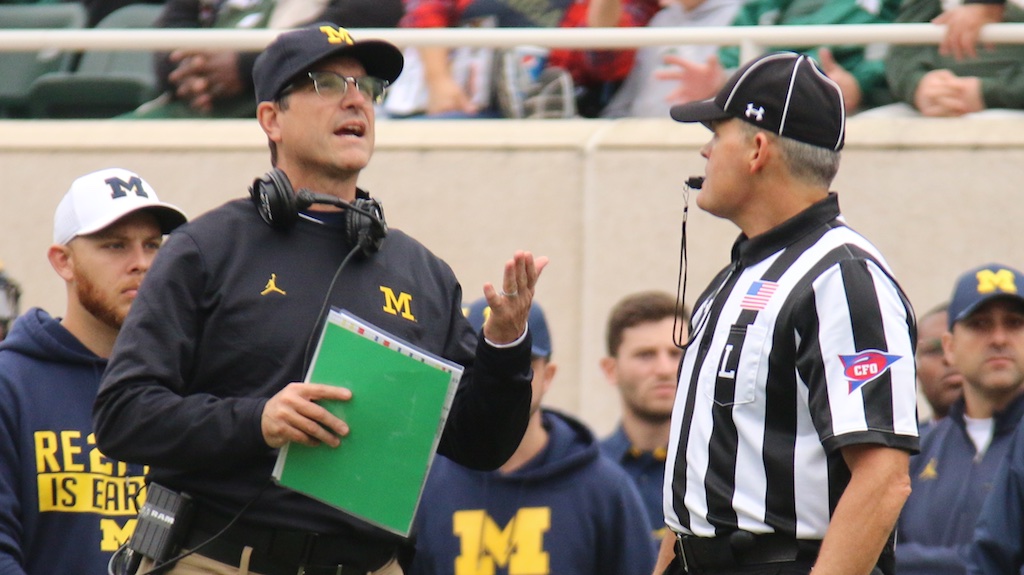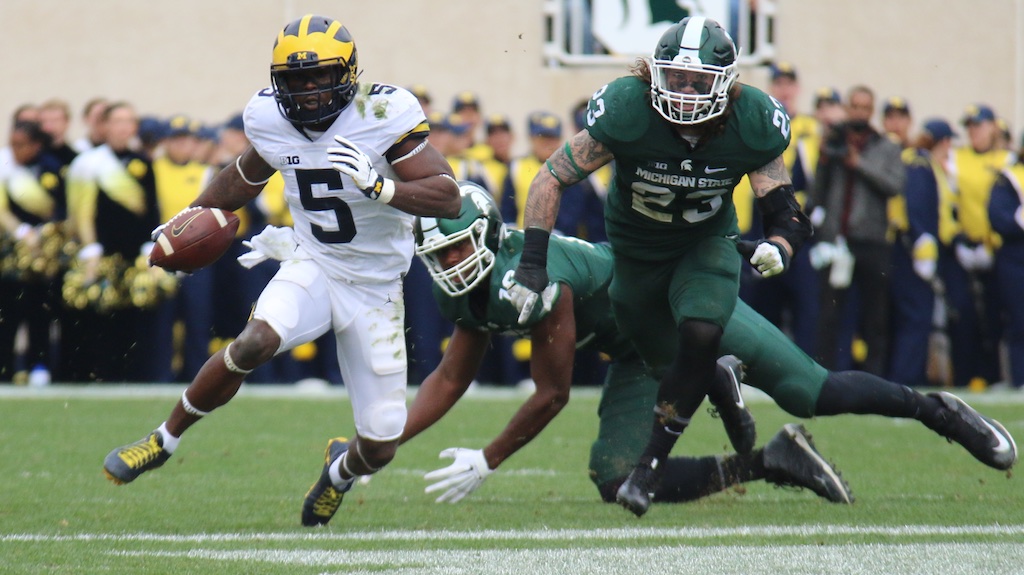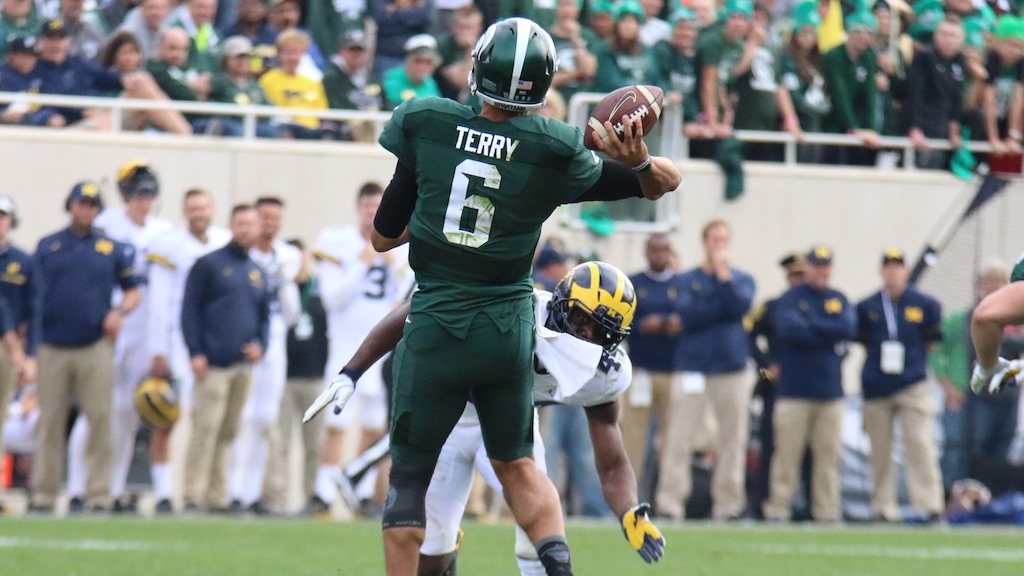The fourth installment of this year’s series looking back at the football rivalry between Michigan and Michigan State takes us to 1986. Wall Street was roaring and Americans were feeling good. On the gridiron, Michigan was enjoying a very good season, though we don’t hear much about it. I suspect that’s due to a loss the Little Brown Jug game and a loss to Arizona State in the Rose Bowl. Other than those games, the Maize & Blue were hitting on all cylinders that year.
The Spartans came to Ann Arbor in 1986 much as they will this week, fresh off a loss to Iowa. They had a pair of good receivers in Andre Rison and Mark Ingram, Sr., and they had an All-Big Ten linebacker in Shane Bullough, whose family is required to send players to Michigan State every 10 years or so. Michigan had Jim Harbaugh at quarterback, with diminutive tailback Jamie Morris running behind massive offensive tackle Jumbo Elliott. Harbuagh also had a reliable tight end in 6-foot-8 Paul Jokisch, and a pair of underrated receivers in John Kolesar and Greg McMurtry. The Wolverines also had an excellent secondary, featuring All-America cornerback Garland Rivers, and Erik Campbell, who split time at safety and cornerback.
Once the game started, it was pretty clear that Harbaugh & Company would rule the day. Harbaugh connected with a wide open Kolesar early, while Morris and Thomas Wilcher each found easy running lanes outside the tackles., and placekicker Pat Moons kicked a field goal to give the Wolverines the early lead. The play that best illustrated Michigan’s dominance was the Wolverines’ first touchdown, which came when Jim Harbaugh dove into the end zone on a busted play. Even when the Wolverines didn’t perform perfectly, they were still able to ad lib their way to success.
That’s not to say that Michigan was flawless. Harbaugh threw an interception when he was hit while throwing, which ultimately led to a Michigan State field goal.
The Wolverines led by 10 in the third quarter when Harbaugh broke the game open with a 42-yard touchdown pass to John Kolesar in the north end zone to give Michigan a 20-3 lead. In the fourth quarter, Harbaugh found sophomore tight end Jeff Brown for a short touchdown pass to close out the scoring in a game in which the Wolverines dominated play much more than the score would indicate.
Thanks to CBS Sports and YouTube poster WolverineHistorian. As always, we own nothing, and this blog and video are provided strictly for the enjoyment of readers.














































